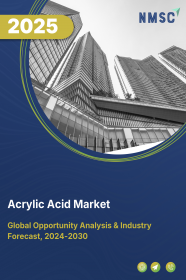
Specialty Chemicals Market by Product Type (Institutional and Industrial Cleaners, Rubber Processing Chemicals, Construction Chemicals, Food & Feed Additives, and Others), by Source (Crude Oil, Naphtha, Ethane, Propane, Butane, Wood, and Others), and by End User (Automotive, Construction, Aerospace, Agriculture, Pharmaceuticals, Electronics, Cosmetic, and Others) –Global Opportunity Analysis and Industry Forecast, 2024 – 2030
Market Overview
The global Specialty Chemicals Market size was valued at USD 563.76 billion in 2023 and is predicted to reach USD 762.08 billion by 2030 with a CAGR of 4.4% from 2024-2030. Specialty chemicals are distinct types of chemicals that are manufactured to serve specific purposes and applications within various industries. Unlike commodity chemicals that are produced in large quantities and have general applications, specialty chemicals are formulated to provide unique functions, properties, or performance enhancements in specific processes, products, or industries.
These chemicals are often characterized by their high degree of purity, specificity, and customized functionalities tailored to meet the precise needs of particular applications. They can include a wide range of chemical compounds, including additives, catalysts, polymers, surfactants, and other formulations designed for diverse sectors such as pharmaceuticals, agriculture, electronics, automotive, cosmetics, and more. Specialty chemicals play a crucial role in driving innovation, improving product quality, and enabling advanced technological advancements in various industries.
Market Dynamics and Trends
The increasing demand for specialty chemicals in the electronics industry is a pivotal factor contributing to the growth of the specialty chemicals market. The semiconductor industry depends on specialty chemicals for processes such as photolithography, chemical vapor deposition (CVD), and etching. These chemicals are vital for creating integrated circuits with ever-smaller feature sizes and higher performance. Moreover, the growing demand for specialty chemicals in the pharmaceutical sector boosts the growth of the market as they are used in various stages of drug manufacturing.
They play a vital role in drug manufacturing, ensuring quality and efficiency. Key drugs such as paracetamol, vitamin K, and erythromycin rely on these chemicals, cementing their importance. However, fluctuations in the prices of raw materials, often derived from petrochemicals and natural resources, can affect the cost of producing specialty chemicals and make long-term planning challenging, thus restraining the growth of the market.On the contrary, the introduction of nanomaterial in specialty chemicals enabling innovative functionalities, such as enhanced catalytic properties, improved coatings, and targeted drug delivery systems is expected to create ample growth opportunities for the market in the future.
Market Segmentations and Scope of the Study
The specialty chemicals market is segmented on the basis of product type, source, application, end user, and region. Based on the product type, the market is classified into pesticides, construction chemicals, specialty oilfield chemicals, food additives, and others. Based on source, the market is segmented into crude oil, naphtha, ethane, propane, butane, wood, and others. Based on application, the market is categorized into surface treatment, catalysis, water treatment, and others. Based on end-user, the market is segmented into automotive, construction, aerospace, agriculture, pharmaceuticals, electronics, cosmetic and others. Regional breakdown and analysis comprise North America, Europe, Asia-Pacific, and the Rest of World (ROW).
Geographical analysis
Asia-Pacific dominates the global specialty chemical market and is expected to remain dominant in the market throughout the forecast period. The increasing demand for specialized materials in electronic components and semiconductor manufacturing is driving the growth of the market.
According to the Semiconductor Industry Association, China is the world's top producer of electronics, accounting for 36% of global output including smartphones, computers, cloud servers, and telecom infrastructure. In addition, the rising demand for innovative cosmetics fuels growth in the specialty chemicals market as they help to formulate high-performance beauty products, meeting evolving consumer preferences.
According to the Korea Customs Service statistics, in 2021, Korean skincare cosmetics continued to be the largest import category representing 34.17%, or USD 560 million of total cosmetic imports. Perfumes scents and haircare products accounted for the next largest import categories.
North America is expected to show a steady rise due to the presence of a large number of pharmaceutical companies such as Abbott Laboratories, Johnson & Johnson, Pfizer Inc., and Merck & Co. which uses specialty chemicals in their production process.
According to the Pharmaceutical Research and Manufacturers of America, over half of the Active Pharmaceutical Ingredients (APIs) used in U.S.-consumed medicines in 2021 were produced in the United States, with more than 85% coming from either the U.S. or Europe.
Also, the growing R&D by regional players in specialty chemicals contributes towards the market growth. These companies are focusing on creating innovative products, improving existing formulations, and tailoring solutions to meet specific regional needs.
For instance, in May 2022, Verdant launched its initial range of specialized sustainable chemicals with a strong focus on serving the pulp, textiles, nonwovens, and hemp industries. The company has also stated its commitment to distributing all environmentally friendly solutions as it develops more chemical solutions to cater to the requirements of all clients involved in the production and distribution of consumer goods.
Competitive Landscape
Various key players operating in the specialty chemical market such as Intertek Group PLC, Sekisui Specialty Chemicals America, Schematic Engineering Industries, Chevron Phillips Chemical Company LLC, DKSH Holding Ltd., Valtris Specialty Chemicals, Entegris Inc., Vimta Labs Ltd., Vantage Specialty Chemicals, Inc., Chroma Specialty Chemicals, S&P Global, Greenfield Global Inc., Chem Process System, Clariant Inc., PETRONAS Chemicals Group among others. These market players are adopting various product launches and business expansions to maintain their dominance in the specialty chemical market.
For instance, in June 2022, Nouryon launched Expancel HP92 microspheres to make thermoplastic microsphere fillers viable for high-pressure manufacturing in the automotive sector. This is a significant breakthrough, as it addresses the growing demand for lightweight materials to meet strict emission regulations and consumer expectations for fuel-efficient vehicles.
Moreover, in April 2022, Evonik launched a project aimed at boosting the production capacity of isobutene derivatives. This particular segment of the C4 production network is responsible for manufacturing specialized petrochemicals, including Tertiary Butanol (TBA), Di-isobutene (DiB), and 3,5,5-Trimethylhexanal (TMH). This initiative has enhanced supply reliability, flexibility, and product quality for Evonik's customers.
Key Benefits
-
The report provides quantitative analysis and estimations of the specialty chemical market from 2024 to 2030, which assists in identifying the prevailing market opportunities.
-
The study comprises a deep dive analysis of the specialty chemical market including the current and future trends to depict prevalent investment pockets in the market.
-
Information related to key drivers, restraints, and opportunities and their impact on the specialty chemical market is provided in the report.
-
Competitive analysis of the players, along with their market share is provided in the report.
-
SWOT analysis and Porters Five Forces model is elaborated in the study.
-
Value chain analysis in the market study provides a clear picture of roles of stakeholders.
Key Market Segments
By Product Type
-
Institutional and Industrial Cleaners
-
General Purpose Cleaners
-
Disinfectants and Sanitizers
-
Laundry Care Products
-
Vehicle Wash Products
-
Others
-
-
Rubber Processing Chemicals
-
Anti-degradants
-
Accelerators
-
Flame Retardants
-
Processing Aid/ Promoters
-
Others
-
-
Construction Chemicals
-
Concrete Admixtures
-
Others
-
-
Food & Feed Additives
-
Flavors & Enhancers
-
Sweeteners
-
Enzymes
-
Emulsifiers
-
Preservatives
-
Fat Replacers
-
Others
-
-
Cosmetic Chemicals
-
Surfactants
-
Emollients & Moisturizers
-
Film-Formers
-
Colorants & Pigments
-
Preservatives
-
Emulsifying & Thickening Agents
-
Single-Use Additives
-
Others
-
-
Oilfield Chemicals
-
Inhibitors
-
Demulsifiers
-
Rheology Modifiers
-
Friction Reducers
-
Biocides
-
Surfactants
-
Foamers
-
Others
-
-
Specialty Pulp & Paper Chemicals
-
Basic Chemicals
-
Functional Chemicals
-
Bleaching Chemicals
-
Process Chemicals
-
-
Specialty Textile Chemicals
-
Coating & Sizing Chemicals
-
Colorants & Auxiliaries
-
Finishing Agents
-
Surfactants
-
Denim Finishing Agents
-
-
Water Treatment Chemicals
-
Coagulants & Flocculants
-
Biocide & Disinfectant
-
Defoamer & Defoaming Agent
-
pH & Adjuster & Softener
-
Scale & Corrosion Inhibitor
-
Others
-
-
Electronic Chemicals
-
Mining Chemicals
-
Pharmaceutical Additives
-
Other Products
By Source
-
Crude Oil
-
Naphtha
-
Ethane
-
Propane
-
Butane
-
Wood
-
Other
By End User
-
Automotive
-
Construction
-
Aerospace
-
Agriculture
-
Pharmaceuticals
-
Electronics
-
Cosmetic
-
Others
By Region
-
North America
-
The U.S
-
Canada
-
Mexico
-
-
Europe
-
The UK
-
Germany
-
France
-
Italy
-
Spain
-
Denmark
-
Netherlands
-
Finland
-
Sweden
-
Norway
-
Russia
-
Rest of Europe
-
-
Asia-Pacific
-
China
-
Japan
-
India
-
South Korea
-
Australia
-
Indonesia
-
Singapore
-
Taiwan
-
Thailand
-
Rest of Asia-Pacific
-
-
RoW
-
Latin America
-
Middle East
-
Africa
-
Key Players
-
Intertek Group PLC
-
Sekisui Specialty Chemicals America
-
Schematic Engineering Industries
-
Chevron Phillips Chemical Company LLC
-
DKSH Holding Ltd.
-
Valtris Specialty Chemicals
-
Entegris Inc.
-
Vimta Labs Ltd.
-
Vantage Specialty Chemicals, Inc.
-
Chroma Specialty Chemicals
-
S&P Global
-
Greenfield Global Inc.
-
Chem Process System
-
Clariant Inc.
-
PETRONAS Chemicals Group
REPORT SCOPE AND SEGMENTATION:
|
Parameters |
Details |
|
Market Size in 2023 |
USD 563.76 Billion |
|
Revenue Forecast in 2030 |
USD 762.08 Billion |
|
Growth Rate |
CAGR of 4.4% from 2024 to 2030 |
|
Analysis Period |
2023–2030 |
|
Base Year Considered |
2023 |
|
Forecast Period |
2024–2030 |
|
Market Size Estimation |
Billion (USD) |
|
Growth Factors |
|
|
Countries Covered |
28 |
|
Companies Profiled |
15 |
|
Market Share |
Available for 10 companies |
|
Customization Scope |
Free customization (equivalent up to 80 working hours of analysts) after purchase. Addition or alteration to country, regional, and segment scope. |
|
Pricing and Purchase Options |
Avail customized purchase options to meet your exact research needs. |




















 Speak to Our Analyst
Speak to Our Analyst

























